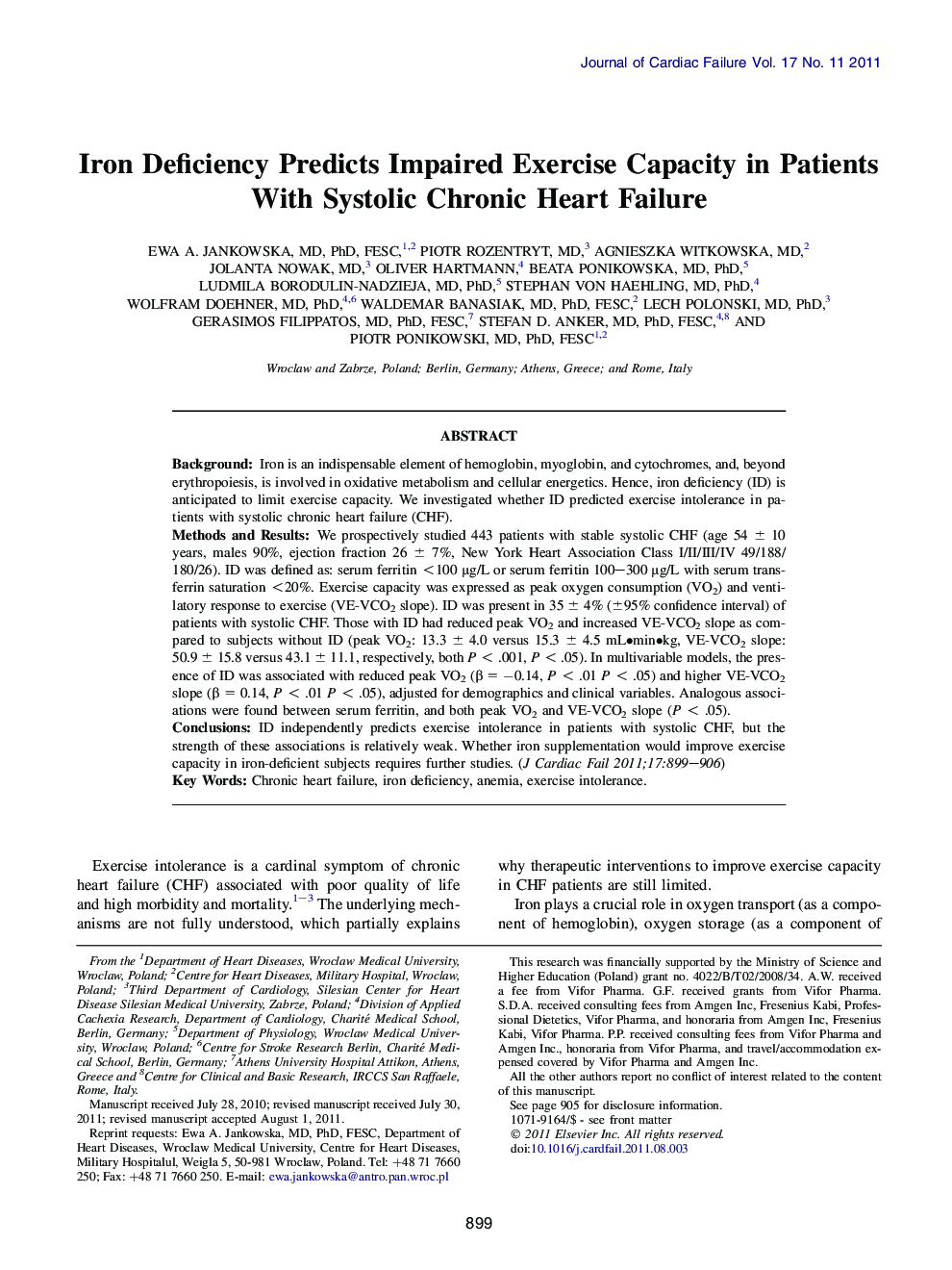| Article ID | Journal | Published Year | Pages | File Type |
|---|---|---|---|---|
| 2960663 | Journal of Cardiac Failure | 2011 | 8 Pages |
BackgroundIron is an indispensable element of hemoglobin, myoglobin, and cytochromes, and, beyond erythropoiesis, is involved in oxidative metabolism and cellular energetics. Hence, iron deficiency (ID) is anticipated to limit exercise capacity. We investigated whether ID predicted exercise intolerance in patients with systolic chronic heart failure (CHF).Methods and ResultsWe prospectively studied 443 patients with stable systolic CHF (age 54 ± 10 years, males 90%, ejection fraction 26 ± 7%, New York Heart Association Class I/II/III/IV 49/188/180/26). ID was defined as: serum ferritin <100 μg/L or serum ferritin 100–300 μg/L with serum transferrin saturation <20%. Exercise capacity was expressed as peak oxygen consumption (VO2) and ventilatory response to exercise (VE-VCO2 slope). ID was present in 35 ± 4% (±95% confidence interval) of patients with systolic CHF. Those with ID had reduced peak VO2 and increased VE-VCO2 slope as compared to subjects without ID (peak VO2: 13.3 ± 4.0 versus 15.3 ± 4.5 mL•min•kg, VE-VCO2 slope: 50.9 ± 15.8 versus 43.1 ± 11.1, respectively, both P < .001, P < .05). In multivariable models, the presence of ID was associated with reduced peak VO2 (β = −0.14, P < .01 P < .05) and higher VE-VCO2 slope (β = 0.14, P < .01 P < .05), adjusted for demographics and clinical variables. Analogous associations were found between serum ferritin, and both peak VO2 and VE-VCO2 slope (P < .05).ConclusionsID independently predicts exercise intolerance in patients with systolic CHF, but the strength of these associations is relatively weak. Whether iron supplementation would improve exercise capacity in iron-deficient subjects requires further studies.
